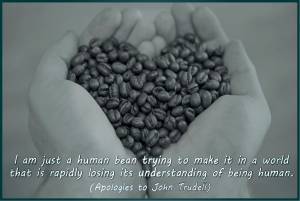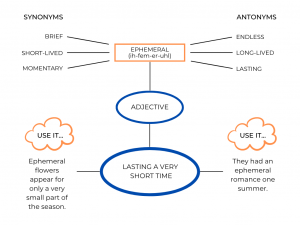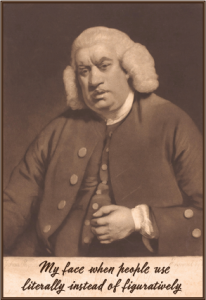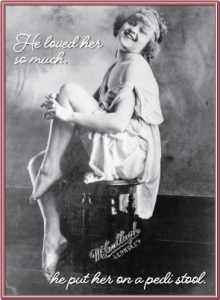62 Diction

Often, beginning student writers’ primary concerns are about meeting page counts or source minimums to satisfy a particular assignment’s requirements. As students’ writing skills and confidences become stronger, however, they can start to focus less on filling pages and focus more on the craft of their writing, which can help enhance the thoughtfulness and clarity of their ideas.
There are two sets of meaning created when a student writes an essay:
- the writer’s main message
- the subtle but detailed style choices like diction that help to enhance that main message.
One way to improve on the quality of writing is to consider modifying your diction, or word choice, in a piece of writing.
Diction: An author’s choice of words, phrases, or sentences. Diction can be formal or informal depending on the needs of the document and expectations of the audience. Diction, therefore, concerns itself with emotional and cultural values of words and their ability to affect meaning.
Consider the word laugh. We all know what it means to laugh, but instead of merely writing laugh in a sentence, a clever writer may consider using alternative words and take advantage of the effects they create. Ponder the words giggle, cackle, and chuckle, all of which also mean to laugh, but note how they create distinctly different meanings within the same sentence.
Examples:
- The old lady’s giggle echoed throughout the quiet house. (silly, fun-filled, childlike, perhaps a bit naughty)
- The old lady’s cackle echoed throughout the quiet house. (scary, witch-like, intending evil)
- The old lady’s chuckle echoed throughout the quiet house. (explosive, sudden, loud sound)
Think how a simple word variation can not only change the meaning of a sentence, but it can establish an overall mood to the work itself.
Example
Here’s a graphic organizer to assist you in building your vocabulary:

This example illustrates the word “ephemeral” at the top, middle of the page, with a pronunciation key directly beneath the word. On the top, left of the page, under the heading Synonyms, are the words brief, short-lived, and momentary. On the top, right of the page, under the heading Antonyms, are the words endless, long-lived, and lasting. In the center of the page is the part of speech to which ephemeral belongs, adjective. Directly under adjective is a brief definition of ephemeral, lasting a very short time. On either side of the definition are examples of the word used in a sentence. On the bottom left is the sentence: Ephemeral flowers appear for only a very small part of the season. On the bottom right is the sentence: They had an ephemeral romance one summer.
Now here’s a blank one for you to fill in on your own: Blank Vocab Builder
Diction choices can include the use of:
- Slang. Recently coined words used informally. Ex: yeet, fleek,
- Colloquial expressions. Regional sayings like “y’all” and “you guys” that are informal.
- Jargon. Words or expressions that pertain to a particular profession or activity.
- Dialect. A nonstandard language style with its own vocabulary and grammar patterns, usually using words that reveal a person’s social class, economic level, or ethnicity.
- Concrete diction: Words that describe physical qualities or conditions.

Samuel Johnson, famous lexicographer, looking stern. - Abstract diction: Words that describe ideas, emotions, conditions, or concepts that cannot be touched.
- Denotation: The exact, dictionary definition of a word, free of secondary definitions or emotion. Ex: That car is jacked up. (Translation = Someone slid a jack under the car and hoisted it up.)
- Connotation: The social meaning of a word, containing suggestions, emotional overtones, or other associations. Ex: The car is jacked up. (Translation = That car is messed up!)
- Euphemism: A nice way of saying something too ugly to utter. Ex: dead = passed away
- Synecdoche: A part of something used to refer to the whole of it. Ex: Nice wheels! (Wheels are a part of a car, but really, you’re referring to the whole car.)
- Metonymy: When a word/phrase refers to something related but doesn’t have to deal with any part of anything. Ex: Jana has a nice ride! (Here, a “ride” really means a car.)
Stylistic Choices:
In writing documents that are creative, a student writer may also rely on additional tools to create a desired effect.
Figurative Language: the use of words that dress up the message. Sometimes the words show comparisons, similarities, relationships, or the treatment of an object as being human-like. Whatever the tactic the author uses, it is meant to make the reader connect to the characters/events through lively description in a deeper way than if the author just said something plainly.
- Ex: “A single second, as big as a zeppelin, floated by.” -“Greasy Lake” by TC Boyle
Explanation: The author simply could have said that time seemed to have stood still at that precise moment, but he didn’t. Instead, he used a simile to tell the same idea but to create a more intense effect. The result, of course, is much more powerful.
Below are common types of figurative language.
- Similes. Comparing two different things using “like” or “as”
- Metaphors. Comparing two different things not using “like” or “as”
- Hyperbole. A severe exaggeration. “It’s a thousand degrees outside!”
- Apostrophe. Directly addressing a person, thing, or abstraction, such as “O Western Wind,” or “Ah, Sorrow…” and is sometimes seen in religious texts or odes.
- Onomatopoeia. A word whose sounds duplicate the sounds they describe. Ex: hiss, buzz, bang, murmur, meow, growl.
- Oxymoron. A phrase with contradictory parts. Ex: jumbo shrimp, Biggie Smalls, a cold sweat, pretty ugly.
- Paradox. Concepts or ideas that are contradictory to one another, yet, when placed together hold significant value on several levels. Ex: Here’s some advice: Never take my advice!
- Kenning. A newly created compound sentence or phrase to refer to a person, object, place, action or idea. Ex: Battle-sweat = blood, Sky-candle = sun, Whale-road = ocean
- Metonymy. The name of one thing for that of another of which it is associated. A crown (royal object) rests on his crown (part of a person’s head).
- Synecdoche. A part of something to refer to the whole. Ex: Get your butt in here! (Really, all of you.)
- Litotes. A discreet way of saying something unpleasant without directly using negativity. Ex: Not the brightest bulb (not very smart)
- Understatement: An ironic understatement meant to downplay a situation and make it seem less than what it really is. Ex: “He’s not the sharpest tool in the shed.” (Translation: He isn’t smart.)
It is important to know when to use plain, formal language and when it is appropriate to use a relaxed, playful, or descriptive language. Consider the purpose of your message and the expectations of your audience. If you are writing an expository essay or a resume, for example, then it would be better to use a plain style, but if you are writing a descriptive essay or a poem, then using figurative language would be more appropriate. The key to creating a written document with an appropriate style relies on two things: deciding which words you choose and the effect you wish to create with those words.
Students will sometimes confuse diction, which is about word choice, with syntax, which is word order.
The Thesaurus: The Good, the Bad, and the Ugly
The Good — Student writers are, by all means, encouraged to use a thesaurus. It is a helpful tool to use when you are:
- feeling repetitive in your word choices and need to find an alternative word
- when you know what you want to say but cannot quite figure out the right term to use
The Bad — A thesaurus is not, however, an appropriate tool to use:
- Spice up an essay to make you sound sophisticated; this is the wrong way to go about it. Focus, instead, on digging deep into the details your ideas and adding complexity to your ideas. The language should reflect the sophistication of the ideas, not override them.
The Ugly – Students will sometimes select words that they are unfamiliar with, and as a result, the wrong word can make the writing unclear and the overall message diluted.
As noted by Stephen King in the introductory quote, it is better to use clear, simple language that conveys a thoughtful but complex chain of ideas rather than an essay overwhelmed with fancy language that has only a few or overly simple concepts. The message is your priority, but the words you choose are the tools that help to deliver that message.
Consider, then, what you are trying to convey. If you are expressing urgency about an issue, then what kind of words related to urgency would you pick to convey that message? Sadness? Happiness? Anger?
The Wrong Way with the Wrong Word:

The most common writing mistake, according to Stanford University, that a student writer makes is choosing the wrong word. These mistakes can sometimes stem from simple misspelling issues (like confusing “from” and “form”) to larger problems like selecting the wrong word altogether (allusion vs. illusion). The wrong word choice can create confusion and cost a student writer some valuable points on his or her grade.
Use this link to Stanford University Grammar Resources so that you can review the list of commonly confused words to ensure you are choosing the right ones in your own writing.
